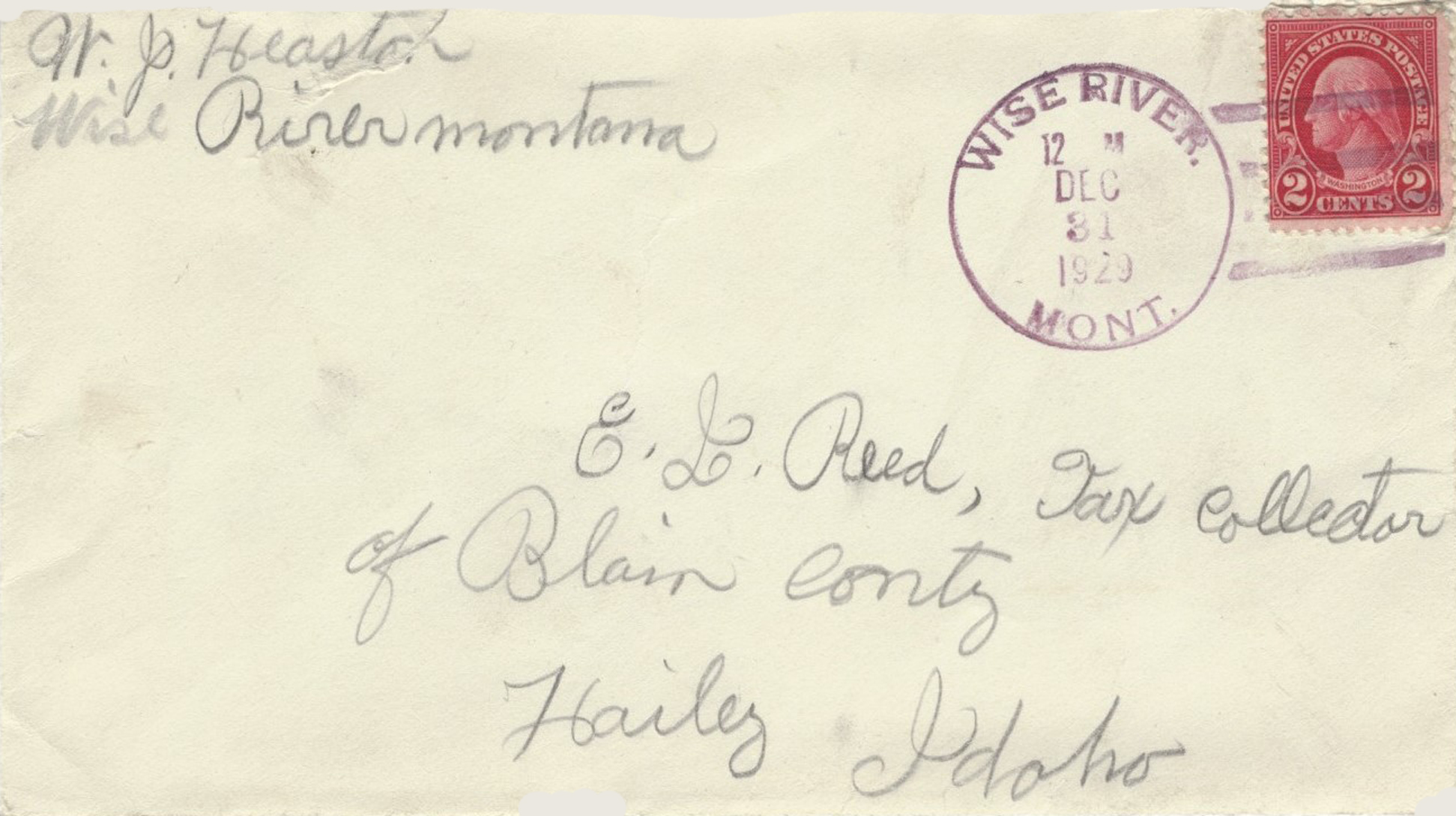PNWPHS
Copyright © 2024 by the Pacific Northwest Postal History Society · All rights reserved
Montana
The discovery of gold in the spring of 1858 quickly led to prospectors flooding the area; ancillary economic and social development followed. The area split from Idaho Territory and was organized as Montana Territory on May 26, 1864. On November 8, 1889, Montana was admitted as the 41st state in the Union.
Montana is a large state with varied terrain and weather, all isolating factors. The railroads were the engine that settled the state; major rail development began in the 1880s supplementing overland routes and express companies, to move people, goods, and mined ore. The Northern Pacific Railroad was awarded land grants by the federal government that enabled it to borrow money to build its system, reaching Billings in 1882. The federal government kept every other section of land, which was made available as land grants to homesteaders for developing agriculture in the state.
Montana is a large state with varied terrain and weather, all isolating factors. The railroads were the engine that settled the state; major rail development began in the 1880s supplementing overland routes and express companies, to move people, goods, and mined ore. The Northern Pacific Railroad was awarded land grants by the federal government that enabled it to borrow money to build its system, reaching Billings in 1882. The federal government kept every other section of land, which was made available as land grants to homesteaders for developing agriculture in the state.
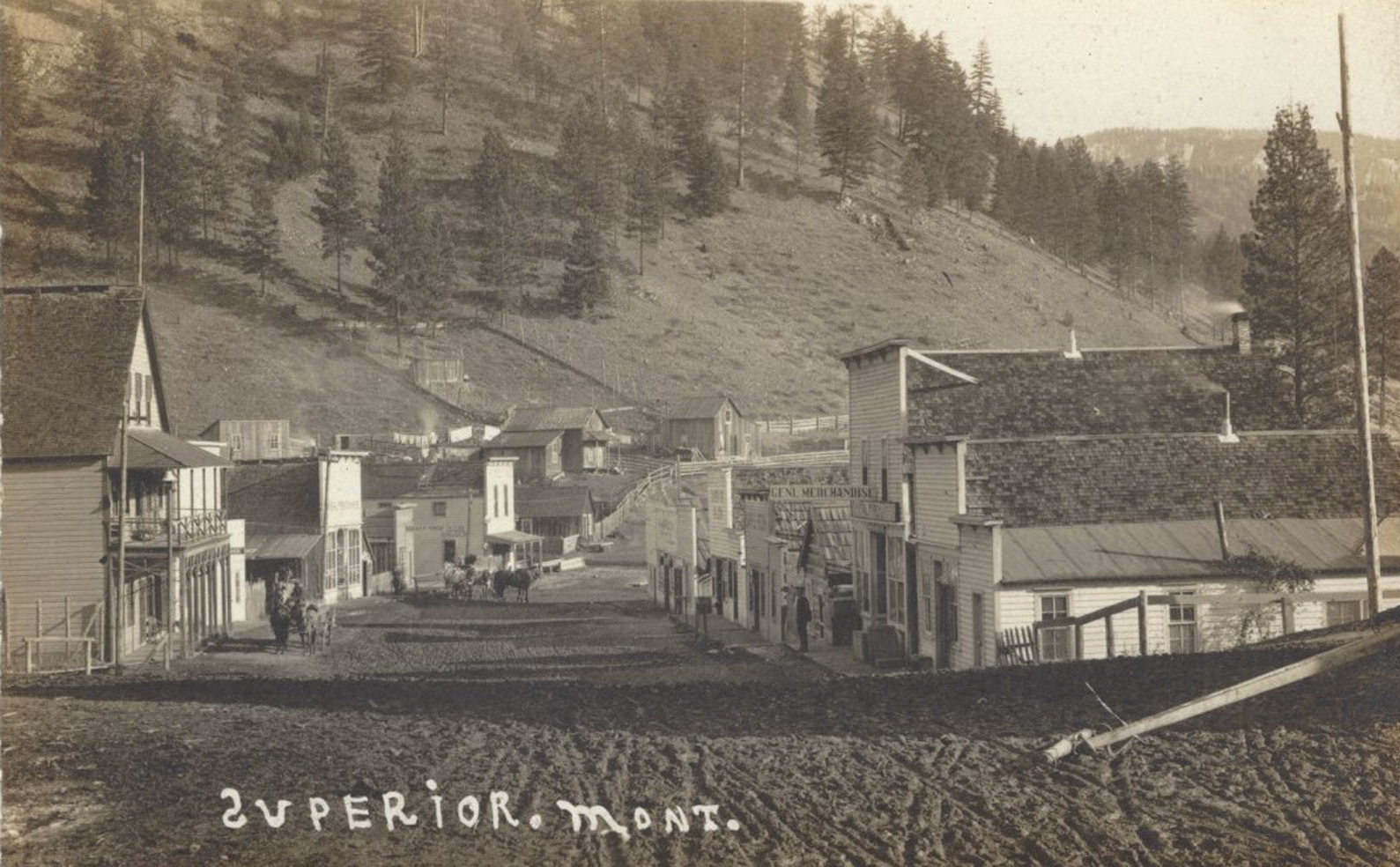
There are currently 56 counties in Montana; the original territory had only nine. The first Montana post office, Hell Gate (now Hellgate), was originally established in Washington Territory in 1863 with Frank Worden as postmaster. The post office name was changed to Missoula on May 14, 1866. Bannack City (1863) and Virginia City were originally established in Idaho Territory. During the existence of Montana Territory and the State of Montana, well over 2,000 post offices have been established. Only about 350 remain today.
Selected Montana Covers
Silver Star is the third-oldest town in Montana. It dates to 1868 when a prospector, Greene Campbell, discovered gold on the side of a hill about 1½ miles west of the present townsite. He filed a mining claim under his name and the “Greene Campbell” became Number 1 in the book of Montana patent records. Silver Star was run by two brothers, George and Bill Boyer. The brothers, along with prospectors and miners in the region, would spend their Saturday evenings together at a general store that was built between two larger camps in the area. There were some arguments as to what these two camps should be named. One of the Boyer brothers favored “Silver Star” the other one offered “Rag Town.” Rag Town was the original name of what became the town of Iron Rod. The Silver Star post office opened on June 15, 1869, with John I. Couna as the first postmaster. Today, Silver Star is an unincorporated community in Madison County with an operating post office and its own ZIP code, 59751.
Courtesy of Larry Maddux.
Courtesy of Larry Maddux.
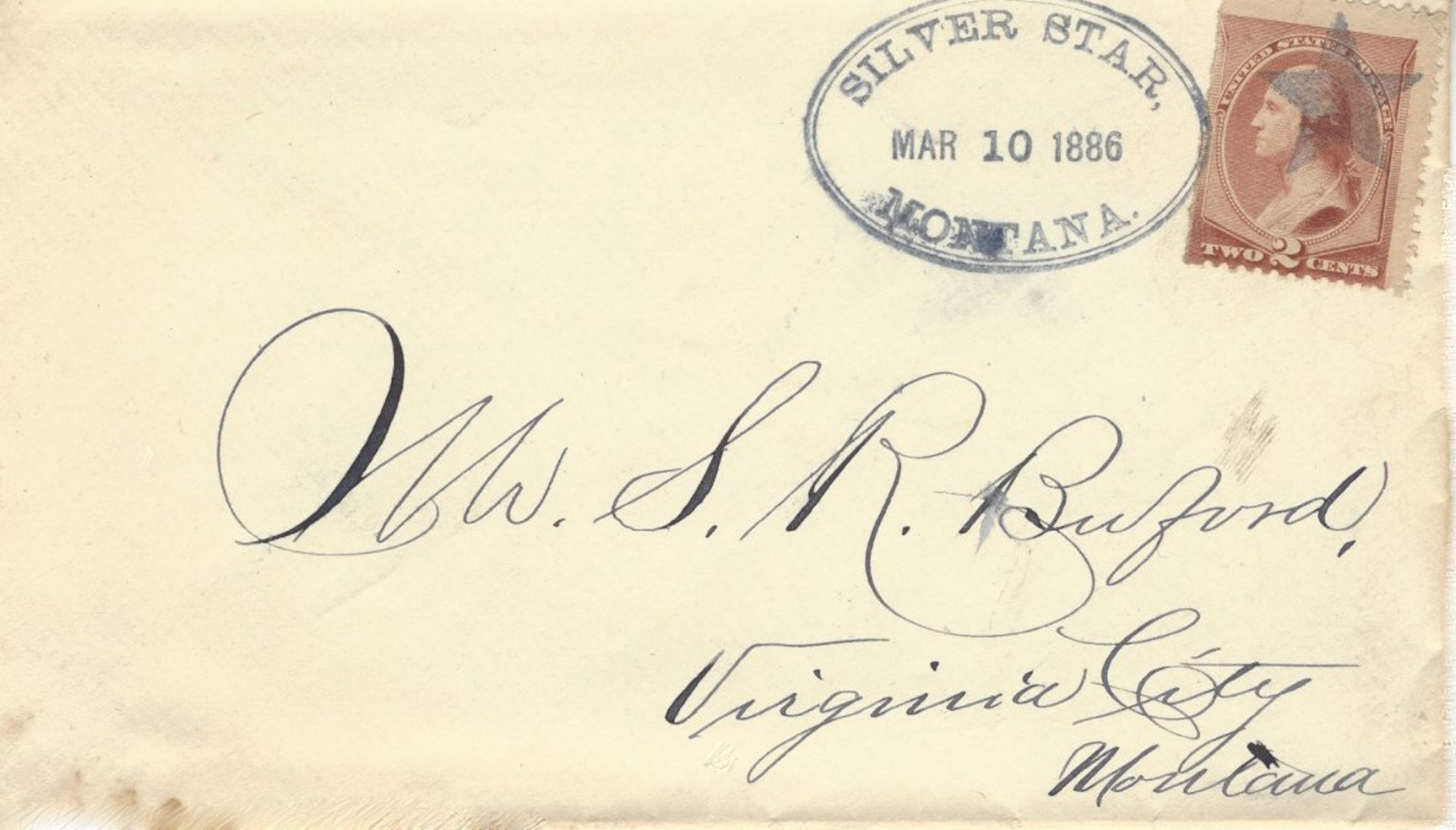
Yellowstone was founded in June 1908 when the Oregon Short Line Railroad was completed (train service to Yellowstone ended in 1960). The post office was established in 1909 with Samuel P. Eagle as the first postmaster. Before Yellowstone was known as a town, it was simply known as Riverside, Boundary, or West End, referring to Yellowstone Park’s western entrance. The town’s name changed in 1920 to West Yellowstone. The town was officially one of the entrances to the park in 1907 when it was first settled.
Courtesy of Larry Maddux.
Courtesy of Larry Maddux.
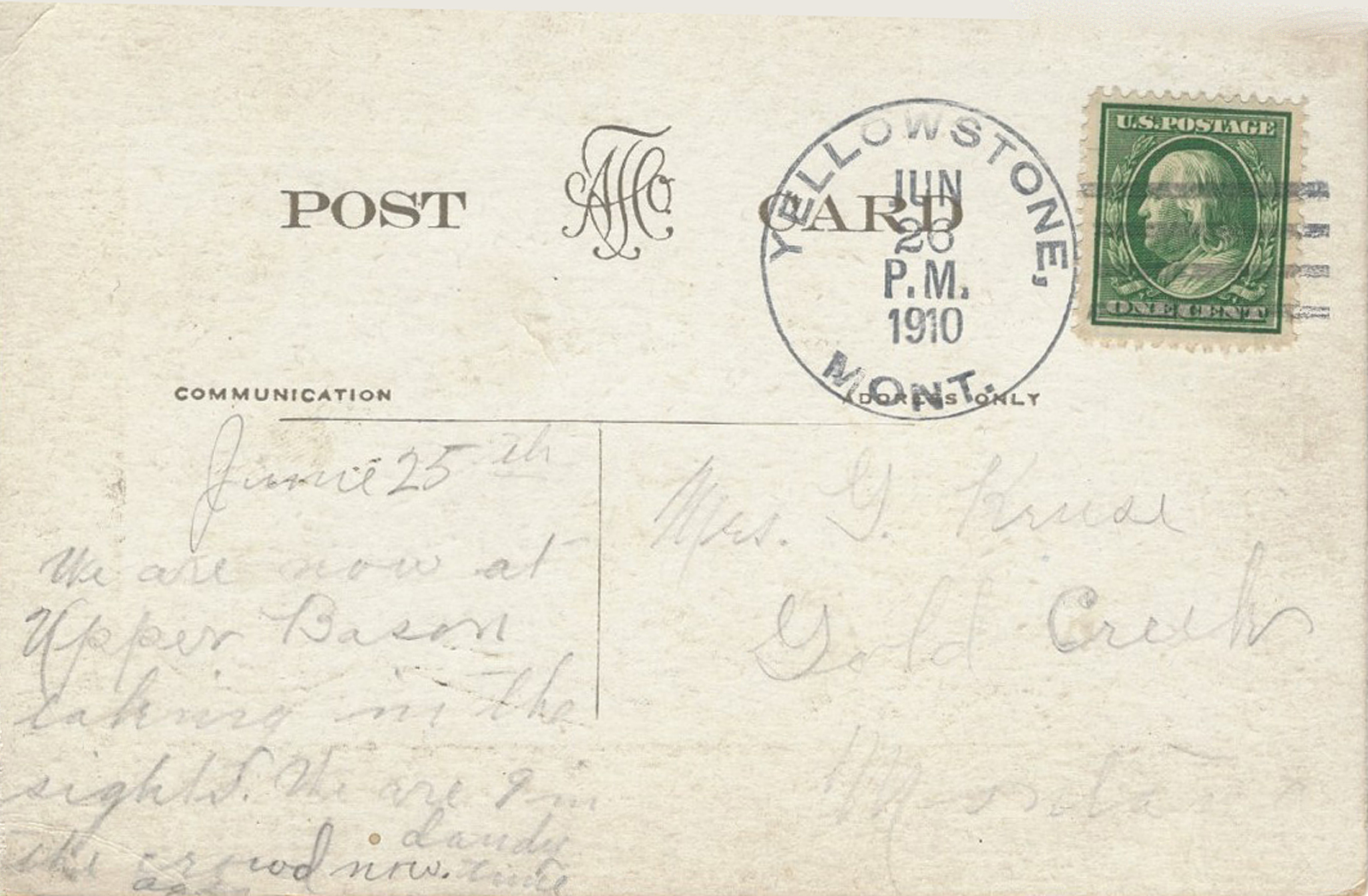
Valentine is located along Blood Creek at the eastern edge of Fergus County. It was once a thriving prairie community boasting a hotel, livery stable, two stores, and a lumber yard. A doctor even called Valentine home at one time. The community’s name came from nearby Valentine Springs. Around 1927, a community hall was built and dedicated with a gala dance, with people traveling miles to attend. Valentine Hall is one of two buildings still standing in Valentine today. A post office opened at Valentine May 10, 1903 with Maud Larimer as postmaster. It was active until November 30, 1943, at which time mail was transferred to the Toy post office.
Courtesy of Larry Maddux.
Courtesy of Larry Maddux.
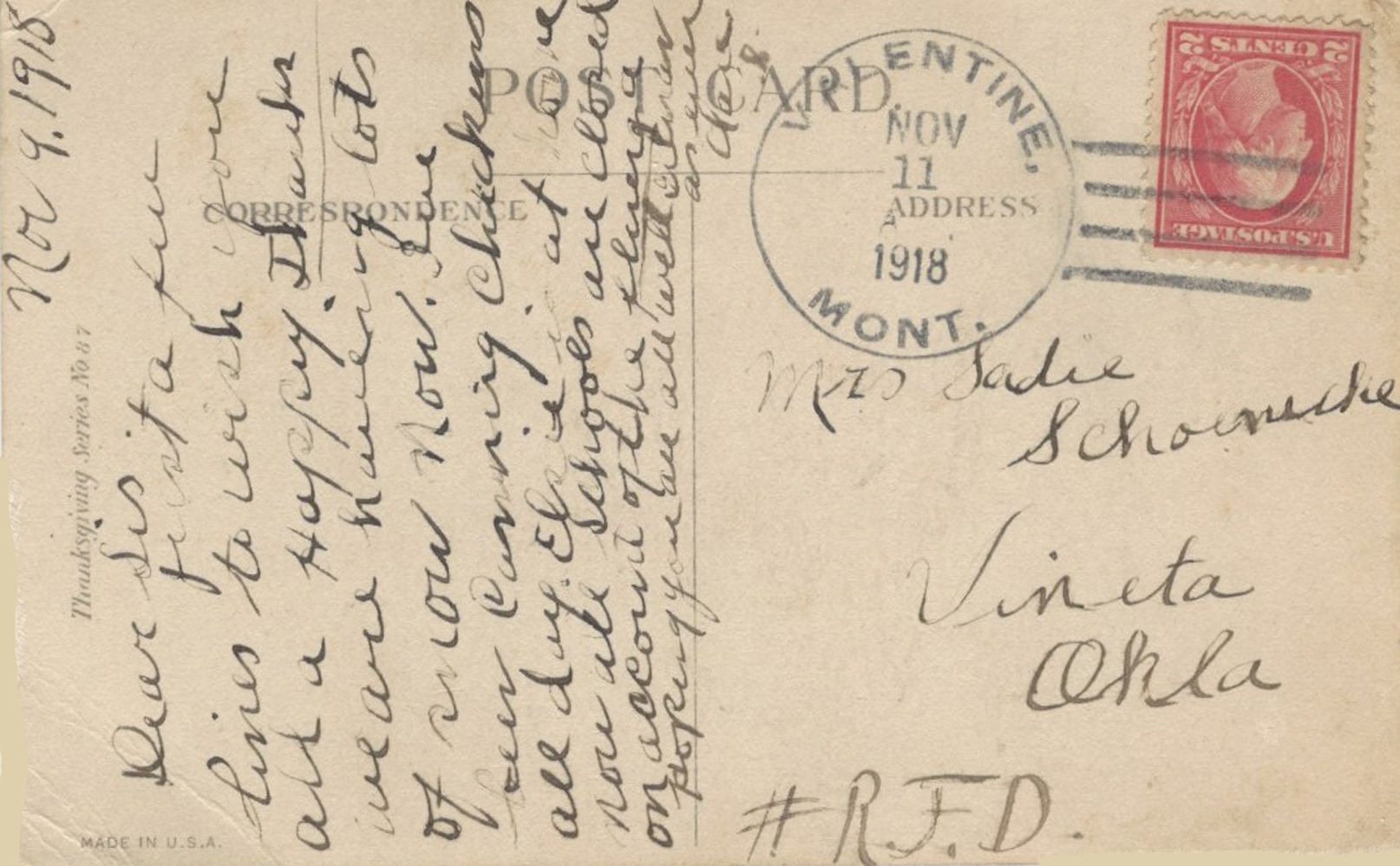
The Broadus post office was established in 1900 and named after the Broadus family, early settlers in the area. When the town’s streets were being laid out, they were made wide enough for horse drawn carriages to turn around. The streets are still this wide today. In 1920, Broadus was chosen as the county seat of the newly established Powder River County. As an incentive for voters to choose Broadus, Margaret Trautman promised a donation of 80 acres from her ranch to the town. The town today functions as both the county seat and its major business hubs and while there are other nearby small communities, Broadus is the only incorporated town in the county and is also home to roughly two-thirds of its residents.
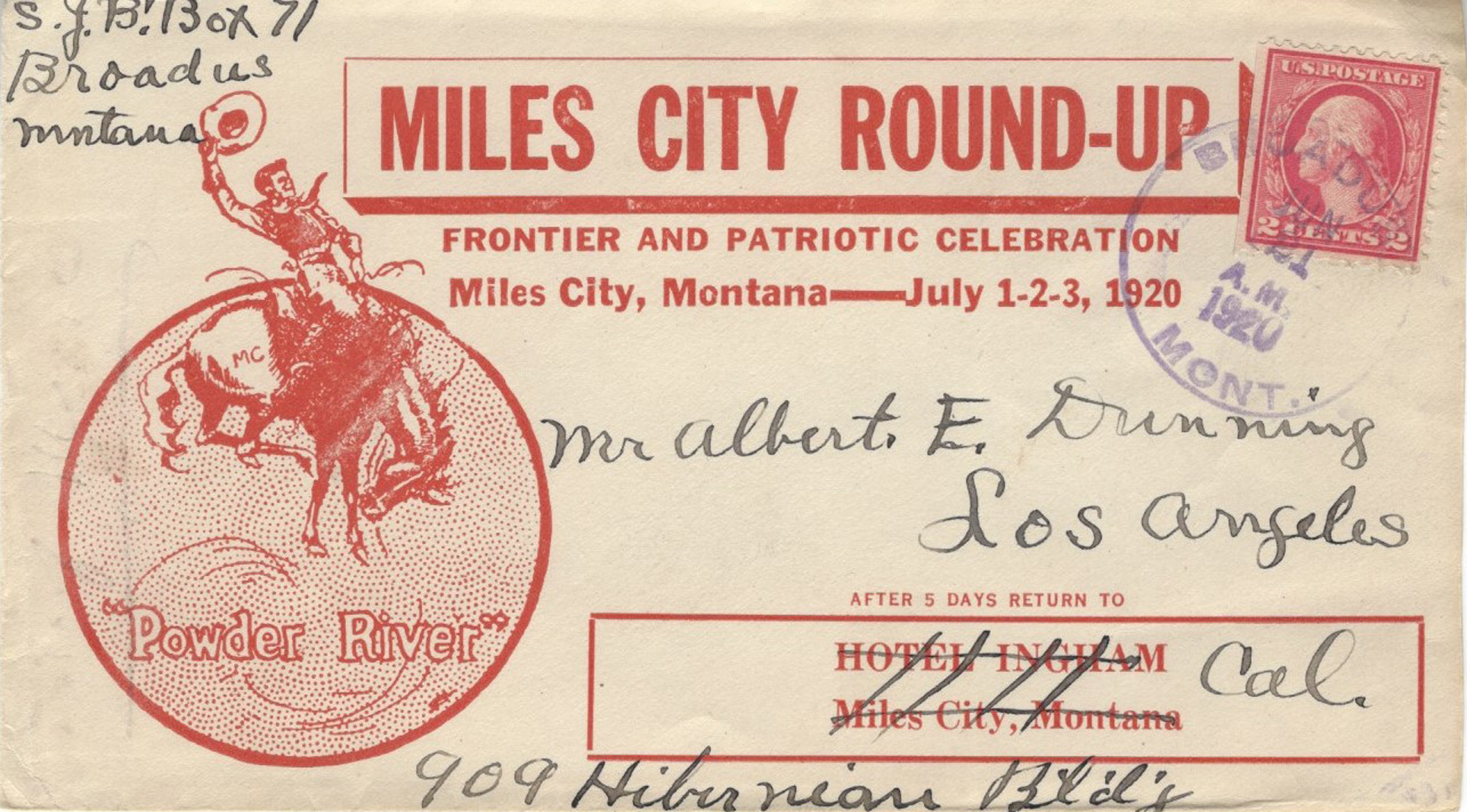
The first Miles City Roundup was held in 1913 and through promotion became a famous rodeo with its share of famous cowboys and horses. During the 1920s and 1930s numerous small rodeos across Montana began as informal community gatherings for Fourth of July picnics.
Courtesy of Larry Maddux.
Courtesy of Larry Maddux.
Wise River is an unincorporated community in northern Beaverhead County. The post office was established April 5, 1913, with Ellen Pyle as postmaster and is still in operation today. Wise River has a current population of 323 residents. State Highway 43 runs through the town. The community takes its name from the Wise River, which flows from the nearby Big Hole River. In the early 1800s, the Wise River region was a “buffer” zone for Native American tribes such as the Shoshone, Blackfeet, Nez Perce, and Salish. This would change from 1810 to 1840 when the American Fur Company, Hudson Bay Company, and the North West Company took advantage in the area to satisfy their demands for fur pelts. In the 1860s, miners flocked to the region after gold was discovered on the Nez Perce reservation. The miners exploited every valley, creek, and rock in search of gold.
Courtesy of Larry Maddux.
Courtesy of Larry Maddux.
